Phase Mask Design Based on an Improved Particle Swarm Optimization Algorithm for Depth of Field Extension
Abstract
1. Introduction
2. Methods
2.1. Theoretical Analysis of Wavefront Coding Systems
2.2. Theoretical Analysis of PSO
2.3. Phase Mask Design Based on Improved Particle Swarm Optimization
3. Simulation Results and Analysis
3.1. Influence of the Number of Iterations and the Population of Particles on the Improved PSO
3.2. Comparison of Improved PSO and Traditional PSO
3.3. Comparison between Improved PSO and SA
4. Experimental Results
5. Conclusions
Author Contributions
Funding
Institutional Review Board Statement
Informed Consent Statement
Data Availability Statement
Acknowledgments
Conflicts of Interest
Appendix A
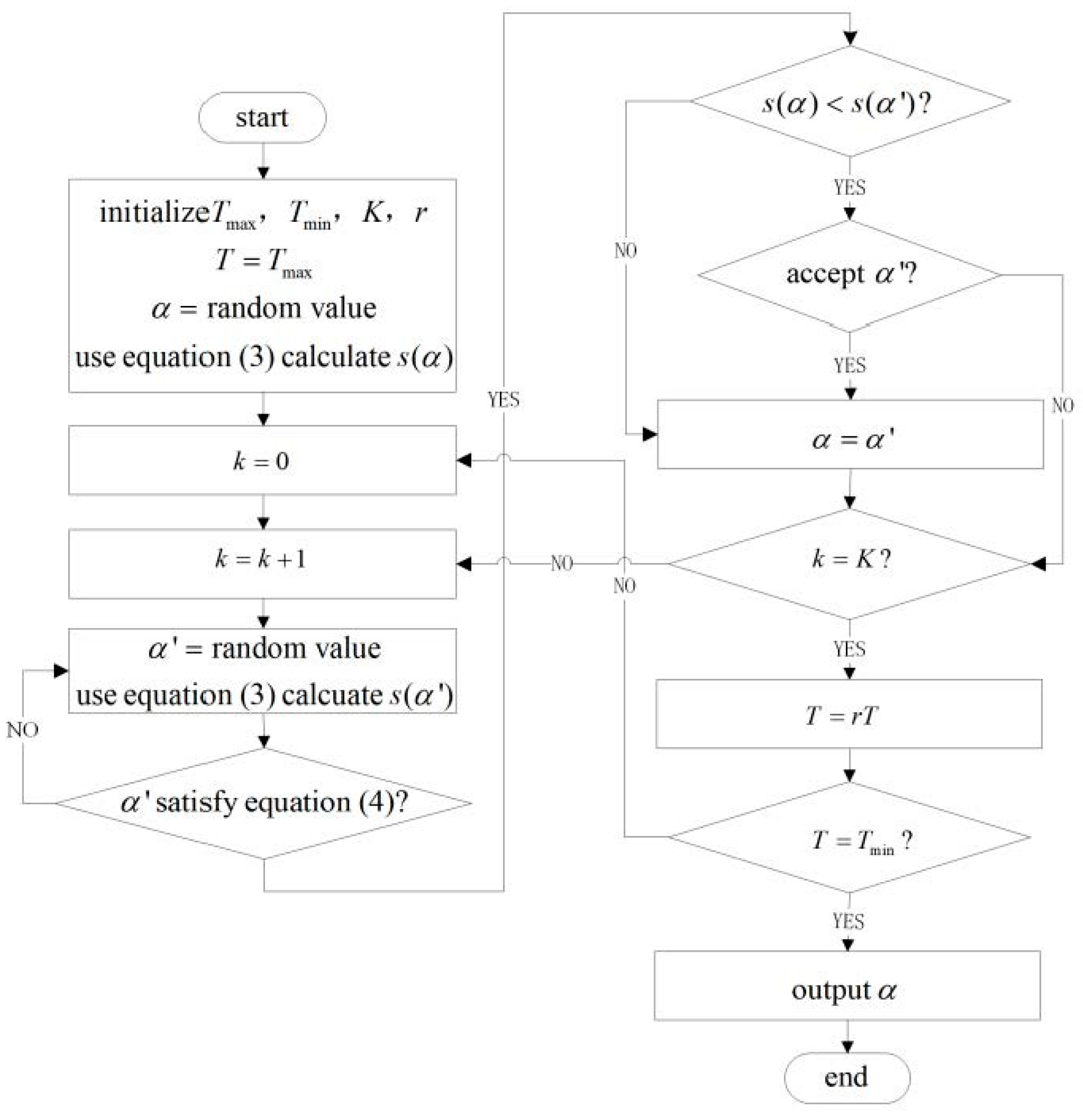
- Assign the cooling rate , number of temperature iterations , the maximum temperature , and the minimum temperature . Let the initial temperature be equal to .
- The cubic phase mask parameter is set as a random value and substituted into Equation (3) to calculate the evaluation function .
- Let , and optimize the current cubic phase mask parameter based on the current temperature .
- Another cubic phase mask parameter is set as a random value and as the current solution, and the evaluation function is calculated.
- Evaluate whether the cubic phase mask parameter meets Equation (4). If yes, proceed to step 6; if no, return to step 9.
- Evaluate whether is less than . If yes, the current solution is the bad solution and proceed to step 7; if no, proceed to step 8s.
- Calculate the acceptance probability and evaluate whether to accept the current bad solution according to the acceptance probability.
- Let be equal to .
- Check whether reaches the number of temperature iterations . If yes, proceed to step 10; if no, and return to step 4.
- Use the cooling rate to reduce the temperature .
- Check whether the temperature reaches the minimum temperature . If yes, the current is the optimal solution of the cubic phase mask parameter; if no, return to step 3.
References
- Dowski, E.R.; Cathey, W.T. Extended depth of field through wave-front coding. Appl Opt. 1995, 34, 1859–1866. [Google Scholar] [CrossRef] [PubMed]
- Yang, L.; Chen, M.; Wang, J.; Zhu, M.; Yang, T.; Zhu, S.; Xie, H. Extended Depth-of-Field of a Miniature Optical Endoscope Using Wavefront Coding. Appl. Sci. 2020, 10, 3838. [Google Scholar] [CrossRef]
- Lee, C.F.; Lee, C. Microscope with Extension of the Depth of Field by Employing a Cubic Phase Plate on the Surface of Lens. Results Opt. 2021, 4, 100107. [Google Scholar] [CrossRef]
- Yu, J.; Chen, S.; Dang, F.; Li, X.; Shi, X.; Wang, H.; Fan, Z. The suppression of aero-optical aberration of conformal dome by wavefront coding. Opt. Commun. 2021, 490, 126876. [Google Scholar] [CrossRef]
- Zhu, L.; Li, F.; Huang, Z.; Zhao, T. An apodized cubic phase mask used in a wavefront coding system to extend the depth of field. Chin. Phys. B 2022, 31, 054217. [Google Scholar] [CrossRef]
- Li, Y.; Wang, J.; Zhang, X.; Hu, K.; Ye, L.; Gao, M.; Cao, M.; Cao, Y.; Xu, M. Extended depth-of-field infrared imaging with deeply learned wavefront coding. Opt. Express 2022, 30, 40018–40031. [Google Scholar] [CrossRef] [PubMed]
- Kennedy, J.; Eberhart, R. Particle Swarm Optimization. In Proceedings of the ICNN‘95—International Conference on Neural Networks, Perth, Australia, 27 November–1 December 1995. [Google Scholar]
- Eberhart, R.C.; Kennedy, J. A New Optimizer Using Particle Swarm Theory. In Proceedings of the Micro Machine and Human Science 1995, MHS ‘95, Sixth International Symposium, Nagoya, Japan, 4–6 October 1995. [Google Scholar]
- Castro, A.; Ojeda-Castaneda, J. Increased depth of field with phase-only filters: Ambiguity function (Invited Paper). In Proceedings of the SPIE OPTO—Ireland, Dublin, Ireland, 5–6 April 2005. [Google Scholar]
- Yang, Q.; Liu, L.; Sun, J. Optimized phase pupil masks for extended depth of field. Opt. Commun. 2007, 272, 56–66. [Google Scholar] [CrossRef]
- Wang, J.; Bu, J.; Wang, M.; Yang, Y.; Yuan, X.-C. Improved sinusoidal phase plate to extend depth of field in incoherent hybrid imaging systems. Opt. Lett. 2012, 37, 4534–4536. [Google Scholar] [CrossRef] [PubMed]
- Ma, Z.; Li, Y. Parameter extraction and inverse design of semiconductor laser based on deep learning and particle swarm optimization method. Opt. Express 2020, 28, 21971–21981. [Google Scholar] [CrossRef] [PubMed]
- Lee, C.Y.; Le, T.A. Intelligence Bearing Fault Diagnosis Model Using Multiple Feature Extraction and Binary Particle Swarm Optimization with Extended Memory. IEEE Access 2020, 8, 198343–198356. [Google Scholar] [CrossRef]
- Li, J.; Dong, X.; Ruan, S.; Shi, L. A parallel integrated learning technique of improved particle swarm optimization and BP neural network and its application. Sci. Rep. 2022, 12, 19325. [Google Scholar] [CrossRef]
- Eberhart, R.C.; Shi, Y. Particle swarm optimization: Developments, applications and resources. In Proceedings of the 2001 Congress on Evolutionary Computation, Seoul, Republic of Korea, 27–30 May 2001. [Google Scholar]
- Bradburn, S.; Cathey, W.T.; Dowski, E.R. Realizations of focus invariance in optical–digital systems with wave-front coding. Appl. Opt. 1997, 36, 9157–9166. [Google Scholar] [CrossRef]
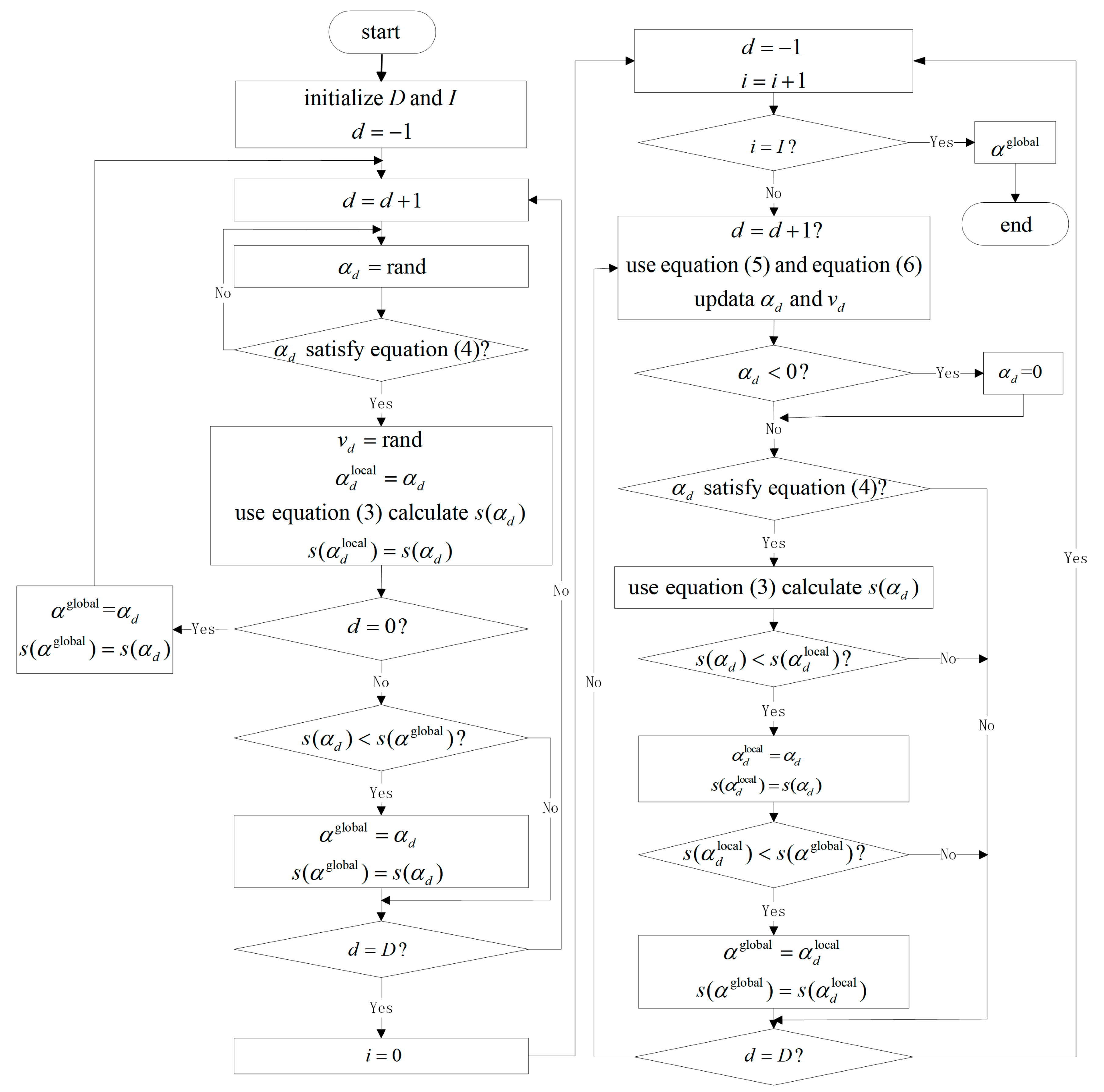

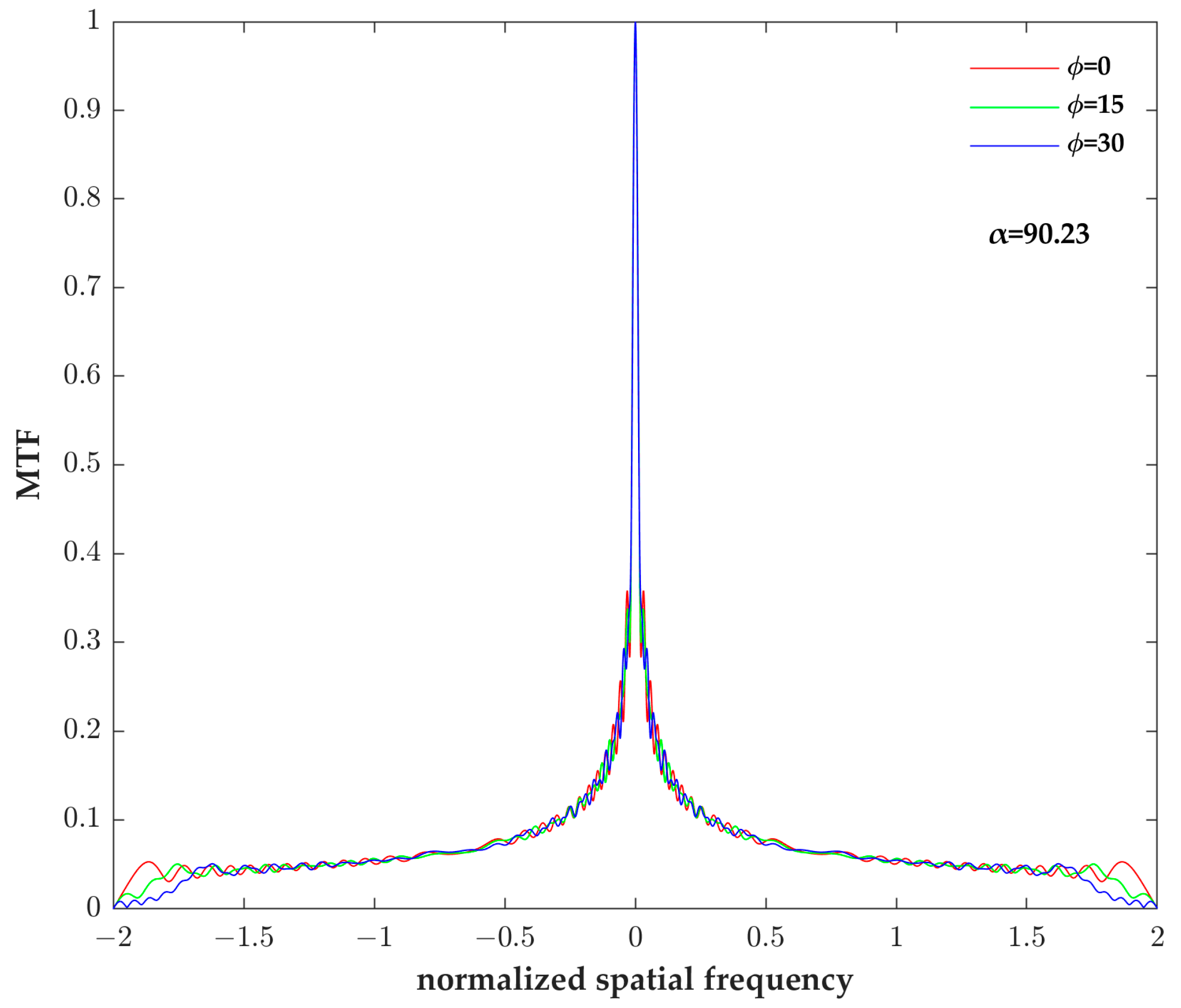

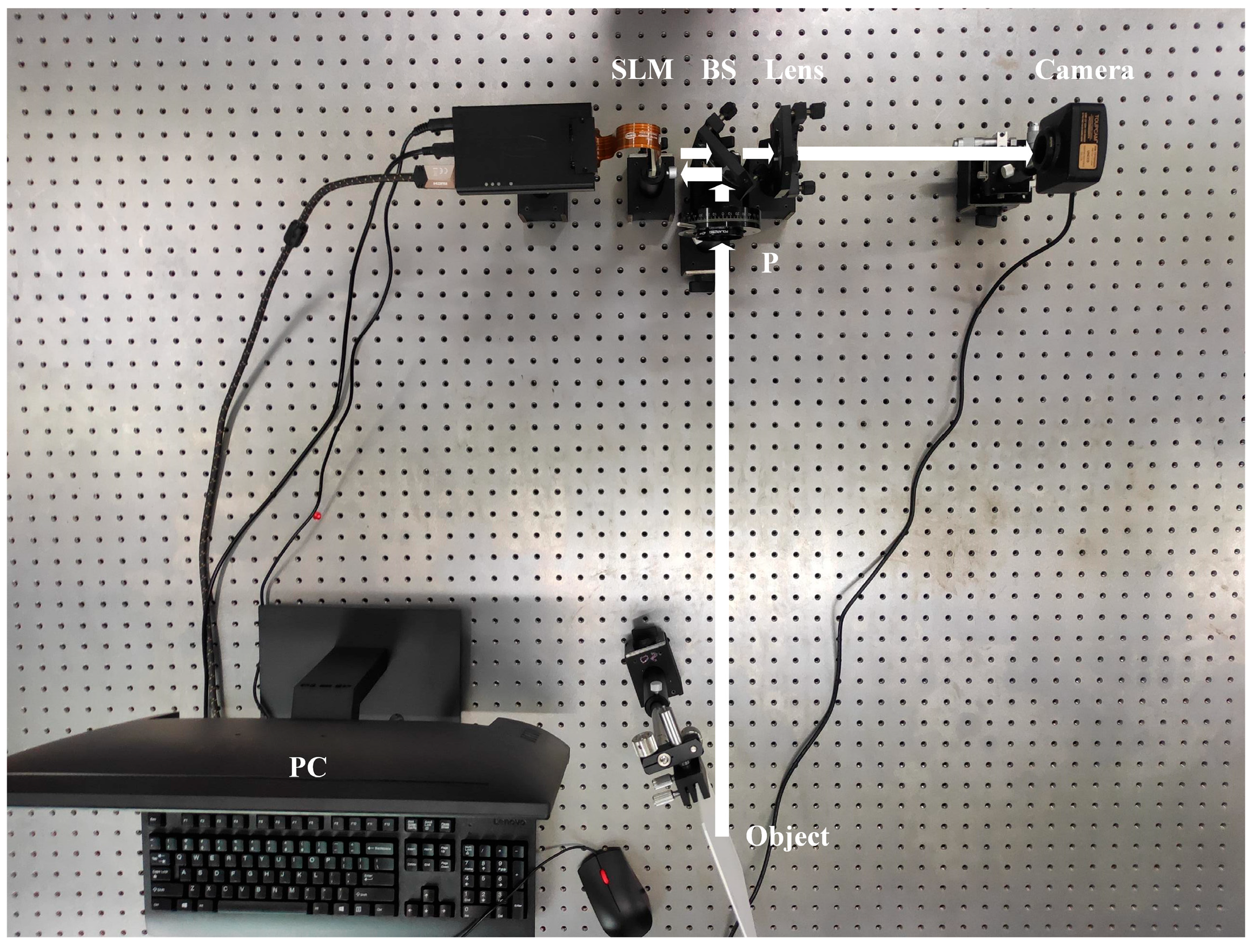
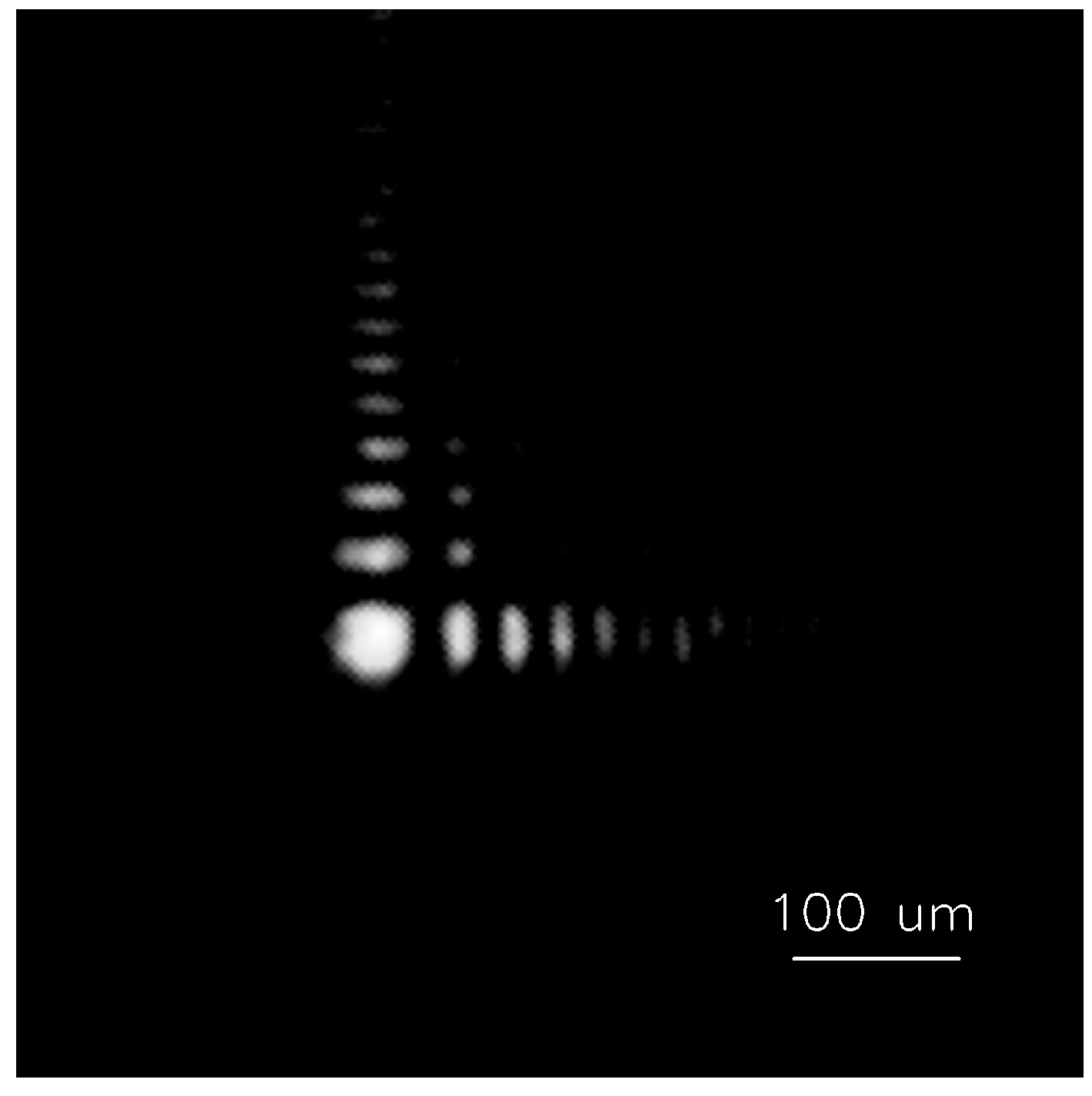



| Population of Particles | Avg | Var | Average Time/s |
|---|---|---|---|
| 51.94 | 7.37 × 102 | 0.19 | |
| 90.06 | 7.15 × 10−2 | 2.05 | |
| 90.20 | 1.15 × 10−2 | 3.86 | |
| 90.23 | 7.40 × 10−3 | 5.90 | |
| 90.25 | 5.61 × 10−3 | 7.71 |
| Number of Iterations | Avg | Var | Average Time/s |
|---|---|---|---|
| 89.35 | 0.76 | 0.63 | |
| 90.16 | 2.79 × 10−2 | 2.91 | |
| 90.23 | 7.40 × 10−3 | 5.90 | |
| 90.25 | 4.34 × 10−3 | 8.82 | |
| 90.27 | 1.41 × 10−3 | 11.60 |
| Parameter | Avg | Var | Average Time/s | References |
|---|---|---|---|---|
| 70.71 | 0.27 | 5.96 | [8] | |
| 80.70 | 0.23 | 5.94 | [8] | |
| 90.58 | 0.53 | 5.98 | [8] | |
| 100.77 | 0.19 | 6.08 | [8] | |
| 90.23 | 7.40 × 10−3 | 5.90 | this work |
| Parameter | Avg | Var | Average Time/s |
|---|---|---|---|
| 89.77 | 0.17 | 57.97 | |
| 86.31 | 9.41 | 5.53 | |
| 88.08 | 4.93 | 11.44 | |
| 86.57 | 9.13 | 5.02 | |
| 66.75 | 2.44 × 102 | 0.45 |
| Parameter | Avg | Var | Average Time/s |
|---|---|---|---|
| 89.89 | 0.16 | 58.67 | |
| 89.81 | 0.26 | 58.86 | |
| 18.16 | 2.72 × 102 | 8.29 | |
| 88.22 | 3.67 | 31.74 | |
| 16.96 | 2.53 | 8.27 |
| Parameter | Avg | Var | Average Time/s |
|---|---|---|---|
| 90.19 | 2.14 × 10−2 | 3.97 | |
| 90.07 | 6.61 × 10−2 | 1.97 | |
| 89.42 | 1.00 | 0.64 | |
| 90.23 | 7.40 × 10−3 | 5.900 | |
| 87.64 | 7.73 | 0.22 |
Disclaimer/Publisher’s Note: The statements, opinions and data contained in all publications are solely those of the individual author(s) and contributor(s) and not of MDPI and/or the editor(s). MDPI and/or the editor(s) disclaim responsibility for any injury to people or property resulting from any ideas, methods, instructions or products referred to in the content. |
© 2023 by the authors. Licensee MDPI, Basel, Switzerland. This article is an open access article distributed under the terms and conditions of the Creative Commons Attribution (CC BY) license (https://creativecommons.org/licenses/by/4.0/).
Share and Cite
Huang, Z.; Li, F.; Zhu, L.; Ye, G.; Zhao, T. Phase Mask Design Based on an Improved Particle Swarm Optimization Algorithm for Depth of Field Extension. Appl. Sci. 2023, 13, 7899. https://doi.org/10.3390/app13137899
Huang Z, Li F, Zhu L, Ye G, Zhao T. Phase Mask Design Based on an Improved Particle Swarm Optimization Algorithm for Depth of Field Extension. Applied Sciences. 2023; 13(13):7899. https://doi.org/10.3390/app13137899
Chicago/Turabian StyleHuang, Zeyu, Fei Li, Lina Zhu, Guo Ye, and Tingyu Zhao. 2023. "Phase Mask Design Based on an Improved Particle Swarm Optimization Algorithm for Depth of Field Extension" Applied Sciences 13, no. 13: 7899. https://doi.org/10.3390/app13137899
APA StyleHuang, Z., Li, F., Zhu, L., Ye, G., & Zhao, T. (2023). Phase Mask Design Based on an Improved Particle Swarm Optimization Algorithm for Depth of Field Extension. Applied Sciences, 13(13), 7899. https://doi.org/10.3390/app13137899





